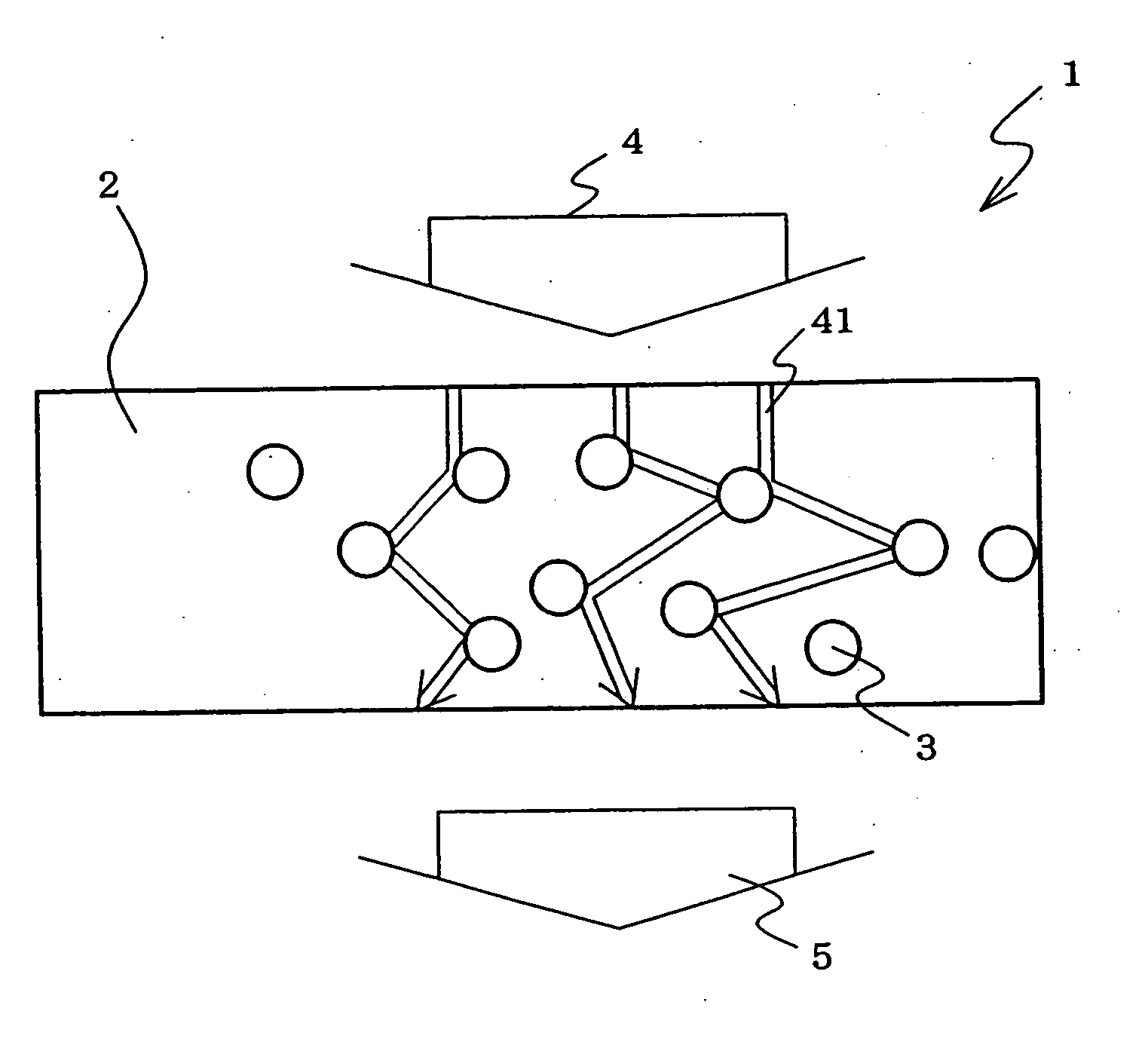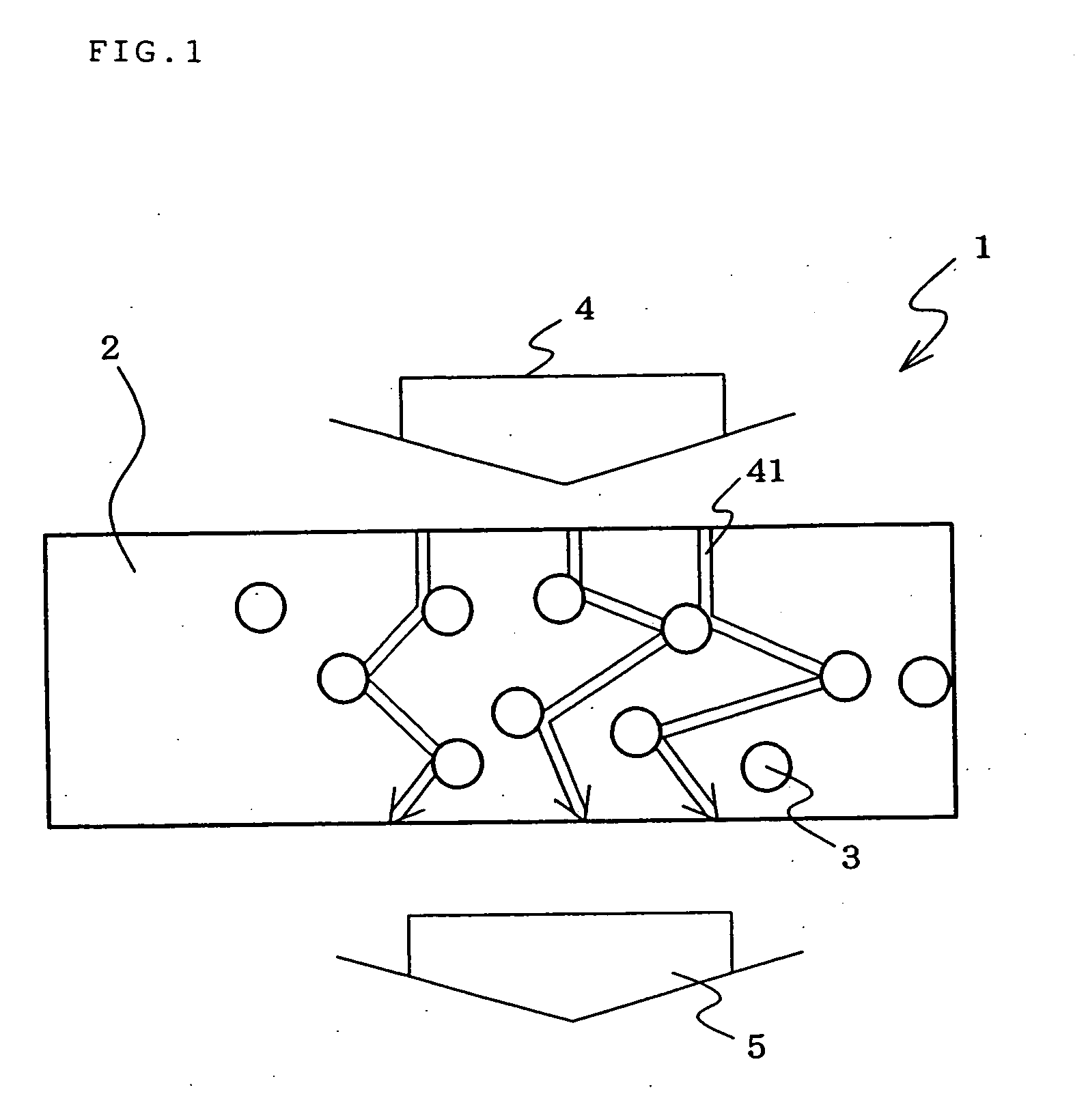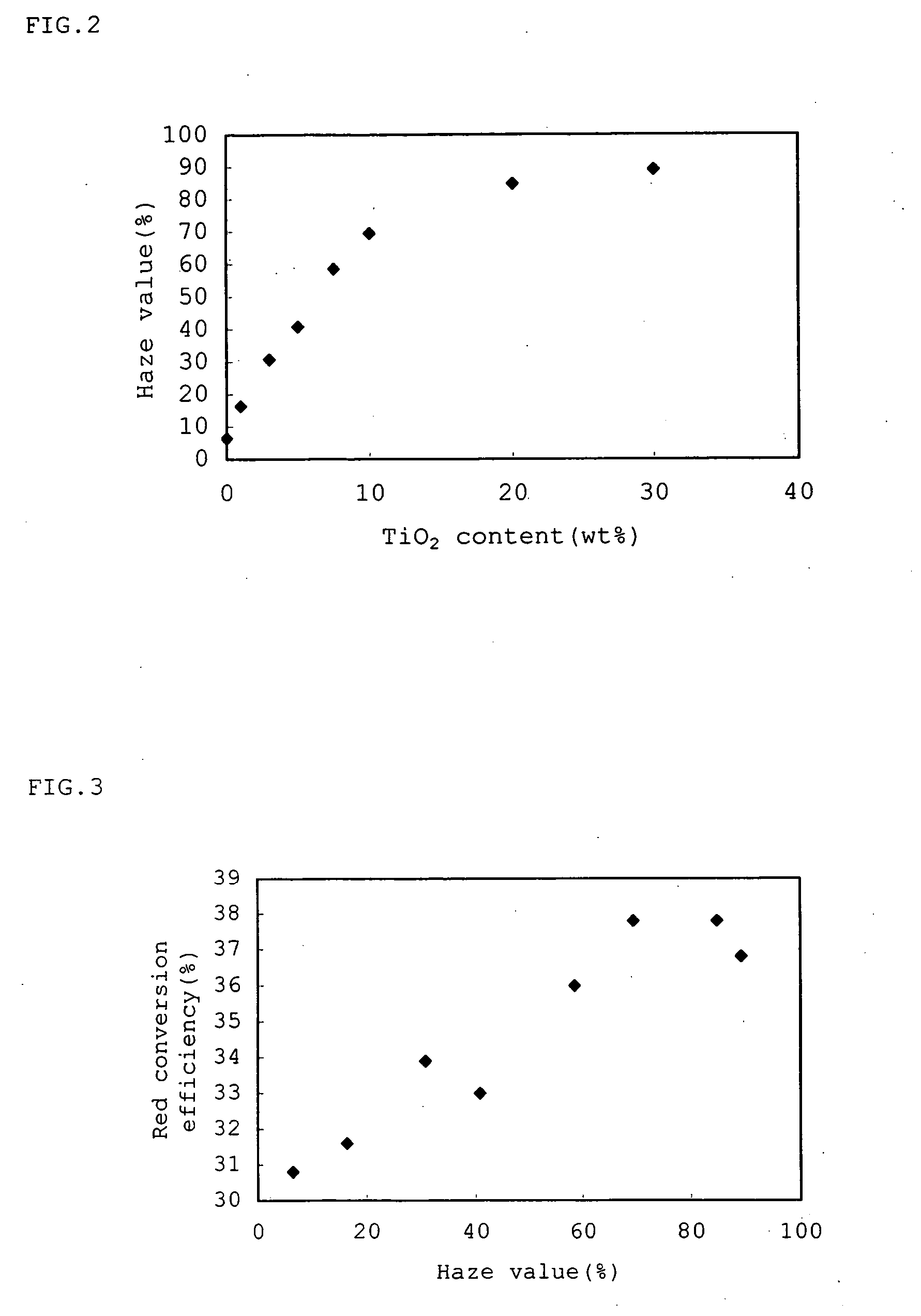Color conversion layer and light-emitting device
a technology of color conversion layer and light-emitting device, which is applied in the direction of digitally marking record carriers, organic semiconductor devices, instruments, etc., can solve the problems of ineffective color conversion and inability to achieve more efficient color conversion, and achieve the effect of less deterioration and long li
- Summary
- Abstract
- Description
- Claims
- Application Information
AI Technical Summary
Benefits of technology
Problems solved by technology
Method used
Image
Examples
example 1
(1) Formation of a Color Conversion Substrate (A Transparent Substrate and a Red Conversion Layer)
[0087] The following were mixed: 70 mg of Coumarin 6, 30 mg of Basic Violet 11 and 30 mg of Rhodamine 6G as materials for a red conversion layer; 28.4 g of a solution of a copolymer made from methacrylic acid and methyl methacrylate (average molecular weight: 30000, acid value: 85, and refractive index: 1.5) in propylenegrycol methylether acetate (solid conlcentration: 35%) as a binder resin; and 17 g of cyclohexanone.
[0088] To 5.0 g of this mixed solution (solid concentration: 22%,. and colorant concentration: 1.3% in the solid) were added 90 mg of titanium oxide particles coated with alumina (MT500HD manufactured by TAYCA CORPORATION, primary average particle diameter: 30 nm, and refractive index of titanium oxide: 2.7), and then the resultant solution was vigorously stirred to prepare a dispersion. At this time, the content of the titanium oxide particles coated with alumina was 7...
examples 2 to 4
, and Comparative Examples 1 to 4
[0110] Red conversion layers were each formed and evaluated in the same way as in Example 1 except that the added amount of the titanium oxide particles coated with alumina was changed.
[0111] A relationship between the particle content by percentage and the haze value in Examples 1 to 4 and Comparative Examples 1 to 4 is shown in FIG. 2. A relationship between the haze value and the red conversion efficiency is shown in FIG. 3.
[0112] It was demonstrated that when the content by percentage of the titanium oxide particles was adjusted in this way, the haze value was able to be controlled and the red conversion efficiency was high in the range of a haze value of 50% or more.
example 5
[0113] The following were mixed: 70 mg of Coumarin 6 as a material for a green conversion layer; 28.4 g of a solution of a copolymer made from methacrylic acid and methyl methacrylate (average molecular weight: 30000, and acid value: 85) in propylene glycol methyl ether acetate (solid concentration: 35%) as a binder resin; and 17 g of cyclohexanone.
[0114] To 5.0 g of this mixed solution (solid concentration: 22%, and colorant concentration: 0.7% in the solid) were added 90 mg of titanium oxide particles coated with alumina (MT500HD manufactured by TAYCA CORPORATION, primary average particle diameter: 30 nm), and then the resultant solution was vigorously stirred to prepare a dispersion.
[0115] At this time, the content by percentage of the titanium oxide particles coated with alumina was 7.5% by weight of the solid therein.
[0116] Thereafter, a color conversion layer was formed and evaluated in the same way as in Example 1 except that a green filter (CG-8510L, manufactured by FUJIF...
PUM
 Login to View More
Login to View More Abstract
Description
Claims
Application Information
 Login to View More
Login to View More - R&D
- Intellectual Property
- Life Sciences
- Materials
- Tech Scout
- Unparalleled Data Quality
- Higher Quality Content
- 60% Fewer Hallucinations
Browse by: Latest US Patents, China's latest patents, Technical Efficacy Thesaurus, Application Domain, Technology Topic, Popular Technical Reports.
© 2025 PatSnap. All rights reserved.Legal|Privacy policy|Modern Slavery Act Transparency Statement|Sitemap|About US| Contact US: help@patsnap.com



